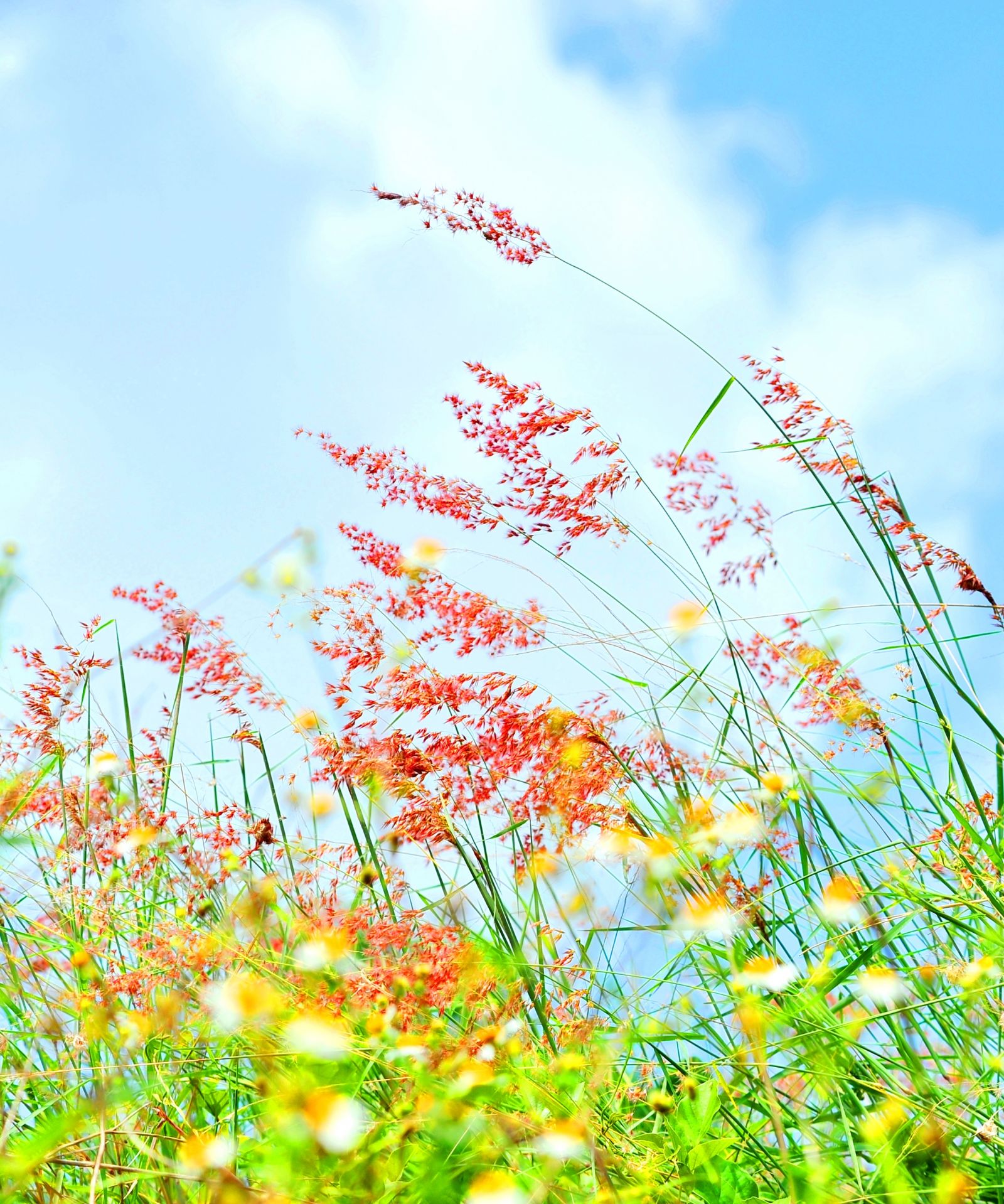
Co may creates a beautiful picture. Photo: Han Dang
Happening to see some co may in the city, I guessed they had made a migration journey here.
How strange! A city with lots of co may, at the crossroads on Hung Vuong St., in the parks by the Perfume River, etc. In untended gardens, grass grows in disorder. Co may, growing neatly, creates a beautiful picture. How peaceful Hue is!
To my knowledge, co may is often found on dry mounds, field brinks and along roadsides. Thi Thung Mound in Phu Yen, for example, the place for scarce horse races, is covered with co may, like a carpet. In breezes, co may move like waves.
In the past, when land was still immense, there was so much co may at my native village. It lived together with shameplants. It has flowers which look like those of reed grass, but smaller. Though we call them flowers, they are actually seeds. Each flower has hundreds of seeds.
There is a kind of very small bird, living in a group. People in my village call it chim chi (chi bird). Its chirping is soft too; sounds like murmurs. Chim chi likes co may seeds very much. Thanks to its small size, it can perch on the grass stalk.
Now in economics, people often mention the value chain. The food in nature to feed animals also forms a chain _the natural food chain. The loss of one is the life of another. It is actually to protect species and biodiversity for our earth.
Now co may is still there, but chim chi are no more, even at my native village. Without the bird, is co may so depressed that it moves to the city?
That tuft of co may in the city caught my attention and awakened my feelings because co may and I have been familiar with each other since so long a time ago. As a child running around, I tended cows every day on the mounds dotted with big trees like parasols. I often picked the grass, tied its head to play da ga (cockfighting).
Then after that I had to spend a lot of time every afternoon removing flowers sewn onto my pants. That is why we call it sewing grass. I do not know its scientific name and what it means to our lives.
At least co may feeds the bird, contributing to the ecodiversity. More than that, co may symbolizes the beauty. Searching on the Internet, I happened to find an old legend about co may.
“There was a man who loved his wife very much. He determined to work away from home, but then never came back. His depressed wife left home, looking for him. She kept going until she died. Impressed by her love for her husband, the Jade Emperor used magic to turn her into a kind of grass symbolizing love. It is co may now.”
Co may in the city that afternoon did not wave in breezes like what I had seen on the mounds. Maybe when bringing the soil to the city, people did not know co may seeds were in it. Co may stood there alone. Was co may the young wife looking for her husband?
I wonder if chim chi is the silhouette of the husbands. Haven’t many birds been so far adopted as incarnation for men in love stories that people make up?
Loneliness sometimes makes peacefulness. The city now has lots of grass. It is certainly not grass in untended gardens. It is peacefulness and joy.
By LE PHUONG
